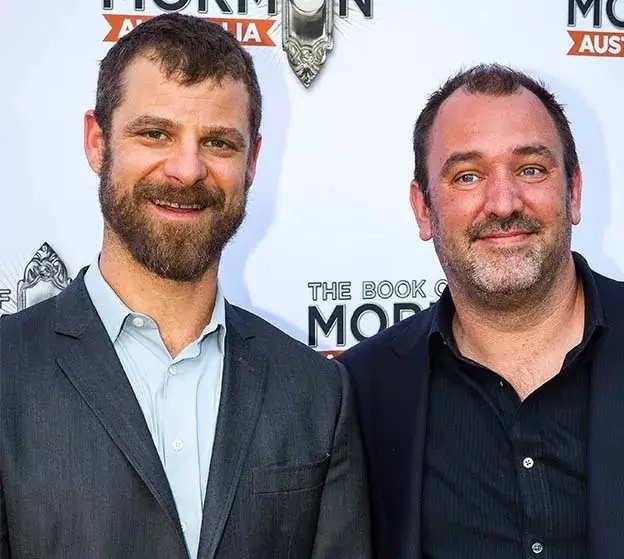intro
The live-action comedy developed by Kendrick Lamar in partnership with South Park creators Trey Parker and Matt Stone has been one of Hollywood’s most intriguing projects since the moment it was announced. Conceived under Lamar’s PGLang banner and Parker and Stone’s Park County, the film promised a collision of artistic worlds rarely seen on the big screen. Paramount initially slated the film for a March release, setting the stage for a bold, culturally charged debut. But as the industry approached that date, the studio quietly removed it from the calendar, issuing only a short note that the team was “working hard at finishing the movie.” That small update has sparked outsized curiosity—and for good reason.
flow
From the outset, the pairing seemed almost too unlikely to be real. Kendrick Lamar, whose work filters political tension, Black identity, and emotional vulnerability through poetic narrative, rarely lends his name to film. Trey Parker and Matt Stone, on the other hand, have long used animation to dismantle cultural norms with a style that is abrasive, fearless, and oddly precise in its commentary. The announcement that these creative worlds would merge into a live-action comedy amplified questions more than answers.
The only substantive information about the plot came in early development coverage: a young Black man employed as a slave reenactor at a living-history museum discovers that his real-life girlfriend is descended from the family who once enslaved his ancestors. For Parker and Stone, the premise sits comfortably within their tradition of confronting discomfort with comedy. For Lamar, it aligns with a fascination for historical memory, systemic tension, and the complicated intimacy of modern relationships.
That intersection—between satire and sincerity, absurdity and emotional truth—creates a tightrope few filmmakers dare to walk. It also sets an enormously high bar for execution, making a delay far from surprising.
stir
Paramount’s decision to pull the film from its March date without immediately replacing it reflects a broader shift in how studios handle culturally dense material. Unlike action franchises or animated features, projects with sharp satirical edges require precision in tone, structure, and audience positioning. A misjudged release window can undercut the film before audiences even have a chance to see it.
The quiet statement from the production teams—essentially confirming the move and offering reassurance that work continues—suggests that post-production remains active. For a film of this nature, editing becomes a form of sculpting. One line delivered with a slightly different inflection can transform a scene from biting to blunt. One edit can reshape whether the film reads as comedy or critique. Satire, especially satire surrounding race and historical trauma, depends on rhythm. That rhythm is rarely right on the first pass.
Marketing strategy is another likely factor. How does one sell a film co-created by music’s most introspective voice and television’s most anarchic satirists? Is it positioned as a Kendrick Lamar project? A Trey Parker and Matt Stone film? A social commentary? A romance? A risk? Campaigns for films that defy genre classification need more time to test audiences and refine direction.
fwd
The absence of a new release date may frustrate fans, but it carries an implicit assurance that the creative teams have no intention of compromising. Kendrick Lamar is famously deliberate; he sits with ideas, revises obsessively, and releases work only when it reaches a level of internal cohesion. Parker and Stone, though known for rapid-fire production schedules on South Park, adopt a wildly different process for long-form work. Their feature projects—Team America, Book of Mormon, and other live-action experiments—have been shaped through extensive rewriting and tonal calibration.
This film, more than others, demands a unified voice. The danger of satire is that it can slip too far in one direction—either toward trivializing serious themes or becoming so heavy that the comedic framework collapses. The delay suggests that the filmmakers recognize how sensitive this balance is and are adjusting accordingly. It may involve reshoots, re-edits, additional testing, or simply the deliberate construction of tone.
culture
What elevates this particular delay beyond Hollywood logistics is the cultural weight carried by the project itself. Films dealing with race, history, and inherited trauma enter a complicated discourse long before they premiere. Every motif becomes a statement. Every comedic beat becomes a commentary. Audiences today are extraordinarily attuned to how these themes are portrayed, and the filmmakers must navigate a landscape where interpretation happens instantly, loudly, and globally.
Kendrick Lamar’s involvement only intensifies expectations. His fans do not simply watch—they study, decode, and hold his work accountable for artistic and cultural integrity. Similarly, Parker and Stone’s long, controversial track record means that their slightest provocation can ignite debate. A rushed release could turn a bold film into a misunderstood one. The delay, then, is not a setback; it is a form of self-preservation for the film’s long-term reception.
industry
Studios are increasingly cautious with mid-budget comedies. In a market dominated by franchise films and streaming priorities, original comedies must be positioned as cultural events to justify theatrical release. This film—by virtue of its talent, premise, and buzz—is one of the few with that potential. Delaying it signals Paramount’s awareness that an imperfect window could limit its chances of breakout success.
The pause also reveals how studios now treat musician-driven projects. Artists like Lady Gaga, Donald Glover, The Weeknd, and Beyoncé have blurred the lines between music and cinema, pushing studios to think about cross-platform promotional strategies. Lamar’s film may be expected to operate in a similar space, extending beyond cinema into cultural conversation. Giving the project more time allows the studio to craft a release that synchronizes with Lamar’s broader creative rhythm.
fin
Delays often read as red flags, but in the case of Kendrick Lamar, Trey Parker, and Matt Stone’s untitled comedy, the pause feels intentional. The film occupies a rare creative territory where humor and cultural history collide, requiring a level of precision and introspection that cannot be rushed. The delay signals not a project in trouble, but a project striving for the exact tone, texture, and impact its premise deserves.
When it finally arrives, it will not be measured by its release date. It will be measured by how it confronts, entertains, provokes, and lingers. And for a trio this daring, waiting is not a burden—it is part of the process.
No comments yet.









